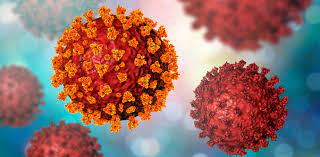A groundbreaking medical intervention has successfully saved the life of a patient suffering from immune thrombotic thrombocytopenic purpura (iTTP), a rare and life-threatening blood disorder characterized by uncontrolled clotting in the small blood vessels. The innovative treatment, led by a team of investigators from Massachusetts General Hospital (MGH), utilized a genetically engineered drug to reverse the disease process. This landmark clinical application was documented in the New England Journal of Medicine.
Dr. Pavan K. Bendapudi, an investigator in the Division of Hematology and Blood Transfusion Service at MGH and an assistant professor of Medicine at Harvard Medical School, spearheaded the study. He explained, “The drug is a genetically engineered version of the missing enzyme in iTTP, and we showed that it was able to reverse the disease process in a patient with an extremely severe form of this condition.”
iTTP is caused by an autoimmune attack on the enzyme ADAMTS13, which plays a crucial role in blood clotting by cleaving a large protein. The standard treatment for iTTP involves plasma exchange, a procedure that removes harmful autoantibodies and supplies additional ADAMTS13. While effective in many cases, plasma exchange can only restore about half of normal ADAMTS13 activity. The new treatment, a recombinant form of human ADAMTS13 (rADAMTS13), has the potential to deliver significantly higher levels of the enzyme.
rADAMTS13 was recently approved for congenital thrombotic thrombocytopenic purpura, a condition in which patients are born without the ADAMTS13 gene. However, its efficacy in iTTP, where inhibitory autoantibodies are present, was uncertain. Under a compassionate use protocol, Bendapudi and his team received approval from the US Food and Drug Administration to use rADAMTS13 on a patient with treatment-resistant iTTP.
“We found that rADAMTS13 rapidly reversed this patient’s disease process despite the current dogma that inhibitory autoantibodies against ADAMTS13 would render the drug useless in this condition,” said Bendapudi. “We were the first physicians to use rADAMTS13 to treat iTTP in the United States, and in this case, it helped to save the life of a young mother.”
The infused rADAMTS13 successfully overwhelmed the inhibitory autoantibodies and reversed the thrombotic effects of iTTP, demonstrating its potential as a game-changing therapy. This significant impact was noted almost immediately, after daily plasma exchange had failed to induce remission.
Dr. Bendapudi is optimistic about the future of rADAMTS13 in treating acute iTTP. “I think rADAMTS13 has the potential to replace the current standard of care in acute iTTP. We will need larger, well-designed trials to evaluate this possibility.”
To further investigate its efficacy, a phase 2b randomized clinical trial of rADAMTS13 in iTTP has recently commenced, marking a promising step forward in the treatment of this rare disorder.












